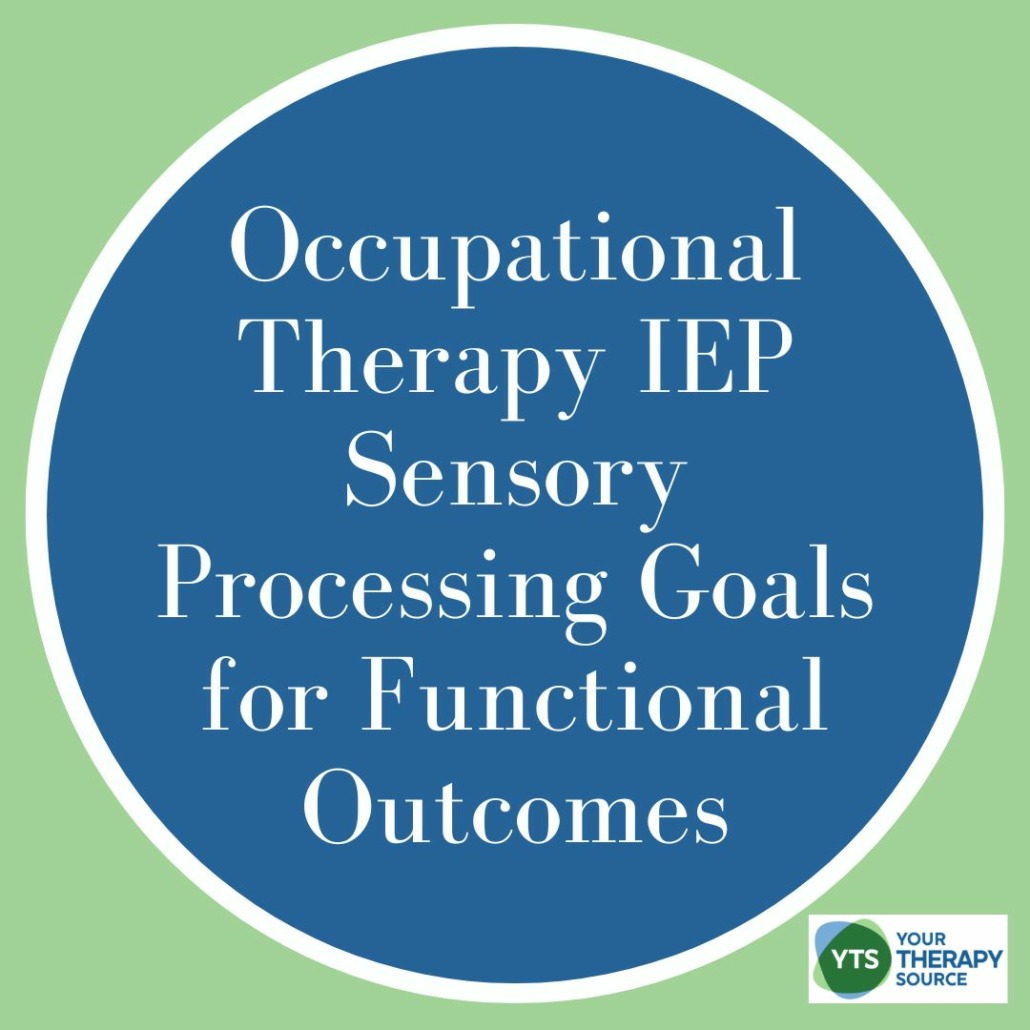OT IEP Goals for Sensory Processing for Functional Outcomes
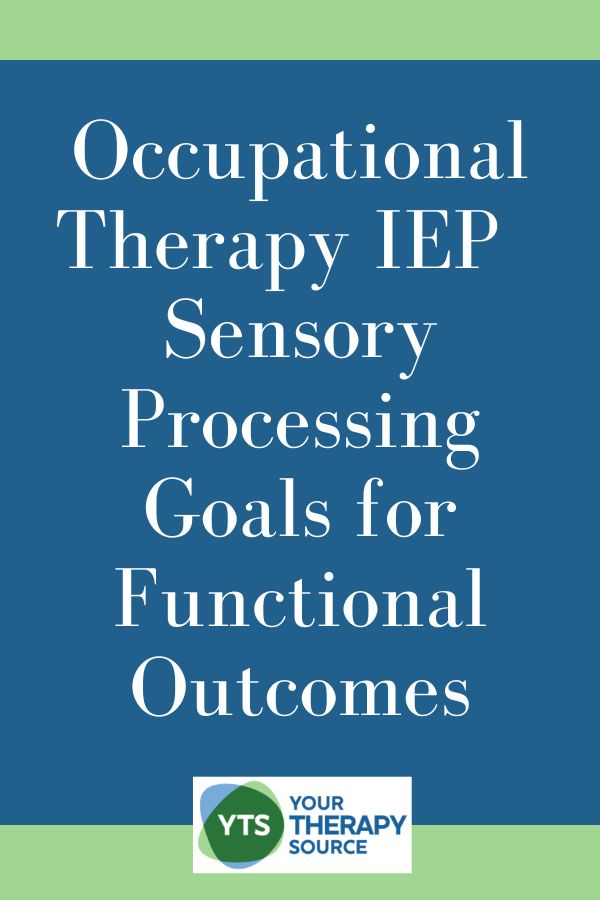
In the realm of education, Occupational Therapists (OTs) hold a pivotal role in supporting students with sensory processing challenges. Sensory Processing Disorder (SPD) can significantly impact a student’s ability to learn, socialize, and thrive in a school setting. Developing an IEP (Individualized Education Program) with a team of professionals, parents, and students is crucial. Learn more about the essential role of OTs in addressing these challenges and delve into the process of writing OT IEP goals for sensory processing that aim to achieve functional outcomes across various domains.
The Crucial Role of Occupational Therapists
Occupational Therapists (OTs) are instrumental in helping students overcome sensory processing difficulties within the school environment. They work collaboratively with educators, speech-language pathologists, physical therapists, and other professionals as part of the IEP team. Together, they create tailored strategies and goals to support students with sensory challenges while ensuring they can achieve their educational objectives effectively.
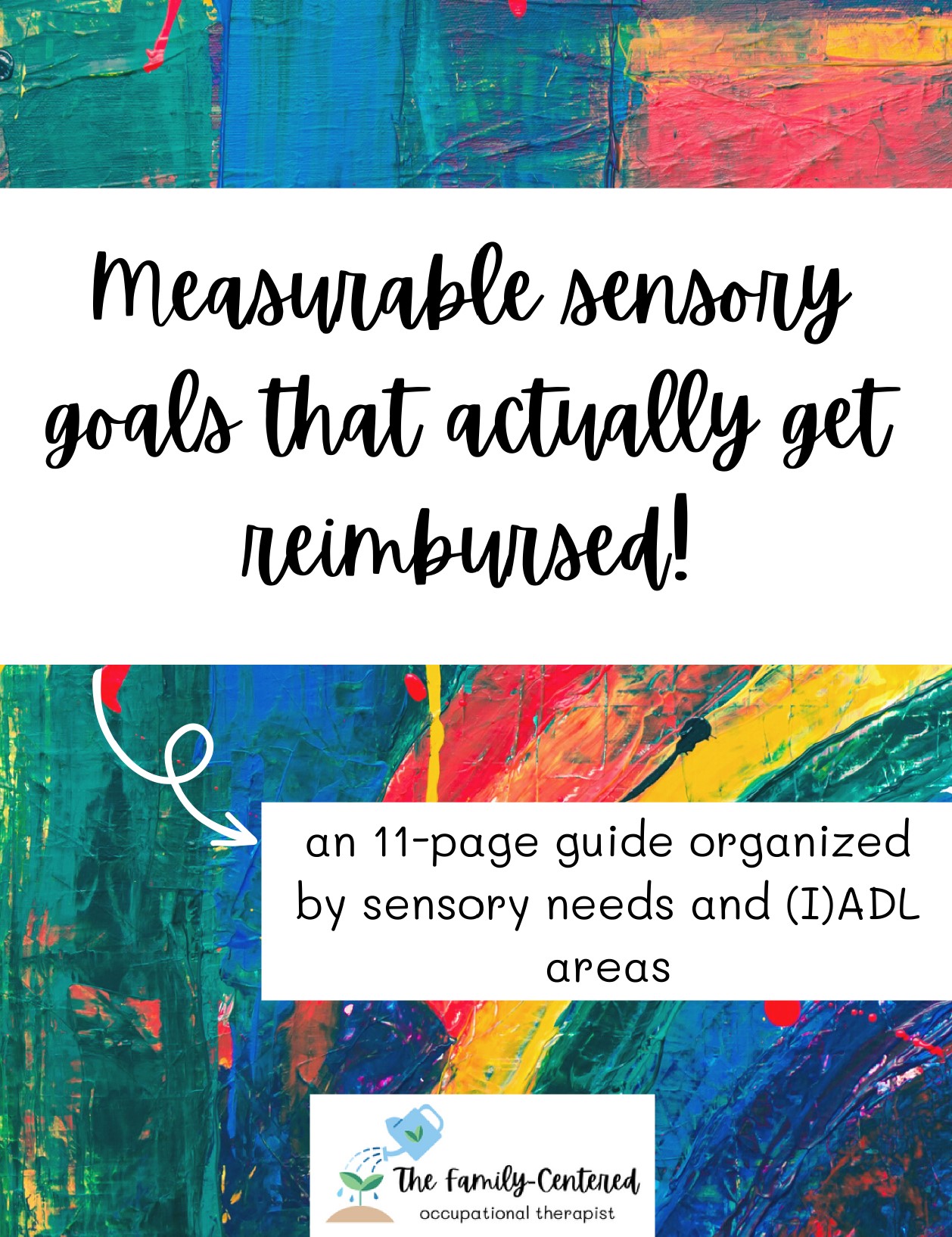
Writing Measurable Sensory Goals
Crafting OT IEP Sensory Goals for Functional Outcomes
The core focus of this article lies in the development of OT IEP sensory goals that go beyond addressing sensory challenges in isolation. These goals aim to foster functional outcomes across various critical domains, including participation in education, emotional regulation, sensory-perceptual skills, and more. Learn more about each of these domains, providing insights into the importance of setting specific goals and how they contribute to a student’s overall success in the school environment.
The Importance of Sensory Processing in the Educational Environment
Sensory processing is a fundamental aspect of a student’s experience in the educational environment. Our senses constantly gather information from the world around us, helping us navigate, learn, and interact with others. For students, efficient sensory processing is critical for their academic success and overall well-being.
The Role of Sensory Processing
Sensory processing serves as the foundation for several essential functions in the classroom:
- Learning: Effective sensory processing is crucial for absorbing and processing information. It allows students to understand and retain new concepts, which are often presented through visual, auditory, and tactile modalities.
- Participation: Active participation in educational activities requires the ability to process sensory information accurately. Students must engage with classroom materials, interact with peers, and follow instructions—all of which heavily rely on sensory processing.
- Emotional Regulation: Sensory processing plays a significant role in emotional regulation. When sensory input is overwhelming or dysregulated, students may experience heightened stress and anxiety, affecting their emotional well-being.
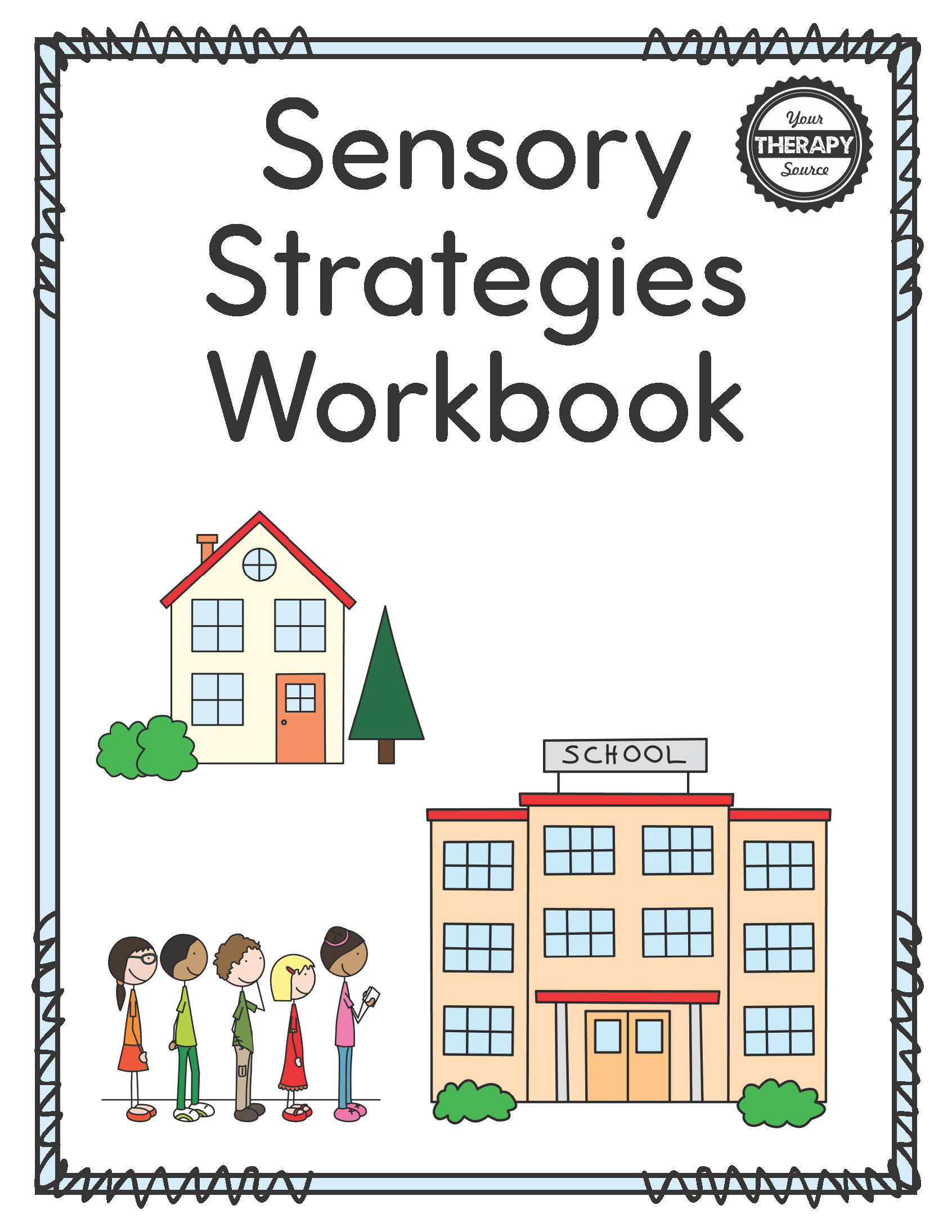
Sensory Strategies Workbook
Functional and Academic Issues Arising from Sensory Processing Challenges
When students struggle with sensory processing, various functional and academic issues can arise, impacting their overall educational experience:
- Limited Focus and Attention: Sensory sensitivities or distractions can lead to difficulties in maintaining focus during lessons and completing assignments. Students may become easily overwhelmed by sensory stimuli, hindering their ability to concentrate on academic tasks.
- Behavioral Challenges: Sensory processing difficulties can manifest as behavioral challenges. Students may exhibit disruptive behaviors as a way to cope with sensory overload or discomfort. This disrupts the learning environment for both themselves and their peers.
- Fine Motor Skill Deficits: Fine motor skills, necessary for tasks like writing, drawing, and using classroom tools, can be affected by sensory issues. Poor motor skills can lead to illegible handwriting and difficulties in completing assignments.
- Social Interaction Issues: Sensory sensitivities may hinder a student’s ability to engage in social interactions. They may struggle with personal space boundaries, exhibit discomfort in noisy environments, or find it challenging to communicate—all of which can impact their relationships with peers.
- Emotional Dysregulation: Sensory processing challenges can contribute to emotional dysregulation. Students may experience heightened stress, frustration, or anxiety due to sensory overload, making it challenging to manage their emotions effectively.
- Academic Underachievement: If sensory processing difficulties go unaddressed, students may struggle academically. They may miss crucial classroom instructions, have difficulty organizing their thoughts, or become overwhelmed by the sensory demands of tests and assignments.
- Reduced Participation in Classroom Activities: Sensory issues can limit a student’s willingness to participate in various classroom activities, from group projects to physical education. This can impact their social development and overall engagement.
Sensory processing is an integral part of a student’s educational experience. When students face challenges in sensory processing, it can lead to various functional and academic issues that affect their ability to learn, engage with their peers, and thrive in the classroom. Recognizing these challenges and addressing them through tailored OT IEP sensory goals is essential to ensure that every student has the opportunity to succeed in their educational journey.
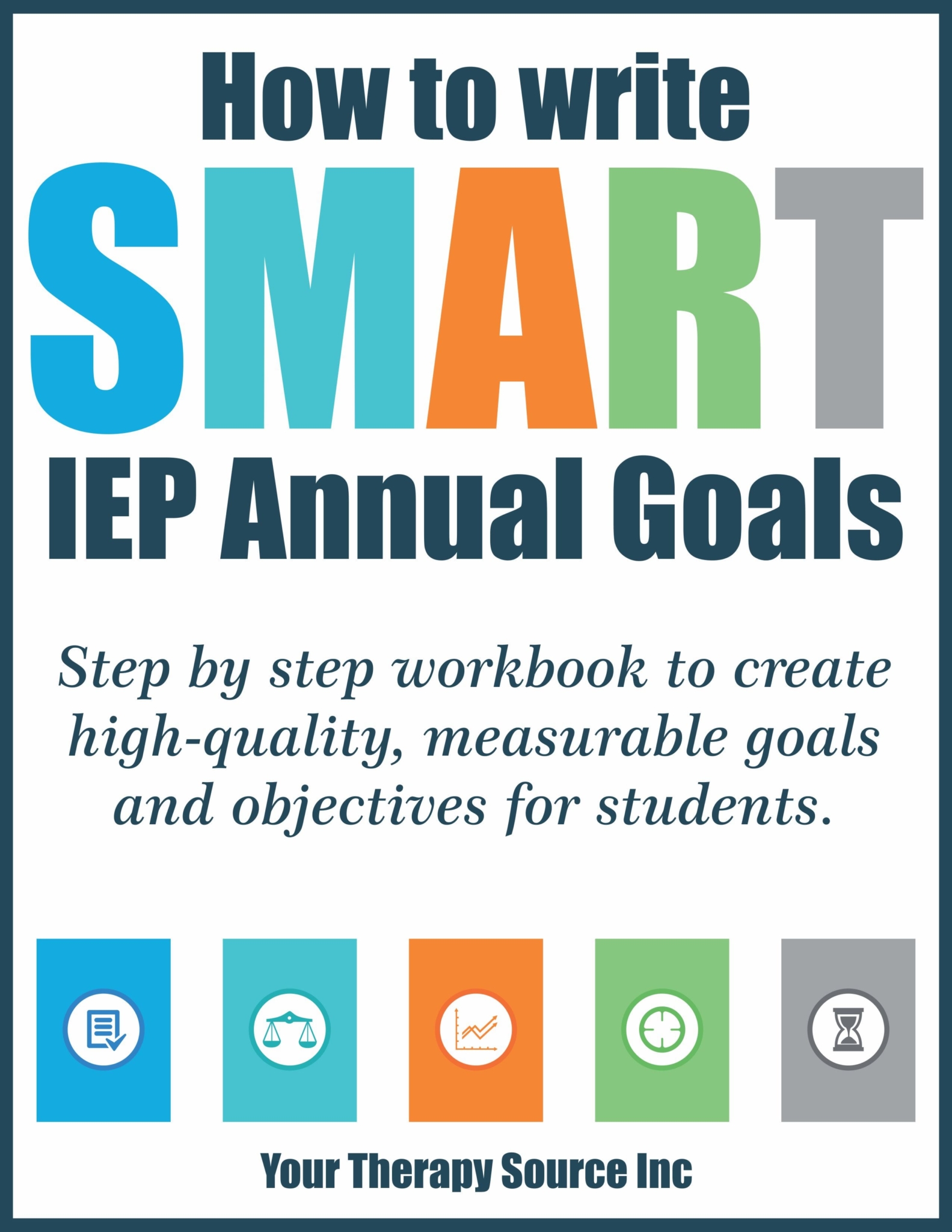
How to Write IEP Goals Workbook
Developing SMART OT IEP Goals for Sensory Processing
To effectively address the sensory processing challenges faced by students in the educational environment, school-based OTs collaborate closely with educators, other related service professionals, parents, students and others within the IEP team. Together, they craft Individualized Education Program (IEP) goals that target specific sensory-related issues to assist student with meaningful activities in their education programs. These goals are designed to be SMART: Specific, Measurable, Achievable, Relevant, and Time-bound.
Specific OT Goals
Specificity is crucial when crafting sensory goals. OTs, in collaboration with the IEP team, define clear objectives that address the student’s sensory challenges within the context of their educational experience.
Measurable Goal
Measurable goals allow for objective assessment and progress tracking. OTs establish concrete criteria to determine whether a goal has been met. This ensures that the student’s progress can be quantified and evaluated over time.
Achievable Goals
Goals should be attainable, considering the student’s current abilities and available resources. OTs collaborate with the IEP team to set goals that are realistic and feasible within the given educational environment.
Relevant Goals
Relevance ensures that the goals directly address the student’s specific sensory challenges and contribute to their overall well-being and educational success. OTs work closely with the IEP team to ensure that each goal aligns with the student’s unique needs.
Time-Bound Goals
Setting a timeframe for achieving the goals helps maintain focus and urgency. OTs, in collaboration with the IEP team, establish a clear timeframe within which the objectives should be met.
By adhering to the SMART criteria, OTs and the IEP team ensure that sensory goals are well-defined, measurable, attainable, relevant, and time-bound. This approach not only enhances the effectiveness of the goals but also facilitates ongoing assessment and adjustment to meet the student’s evolving needs. It empowers students with sensory processing challenges to make meaningful progress in their educational journey while building essential skills for life beyond the classroom.
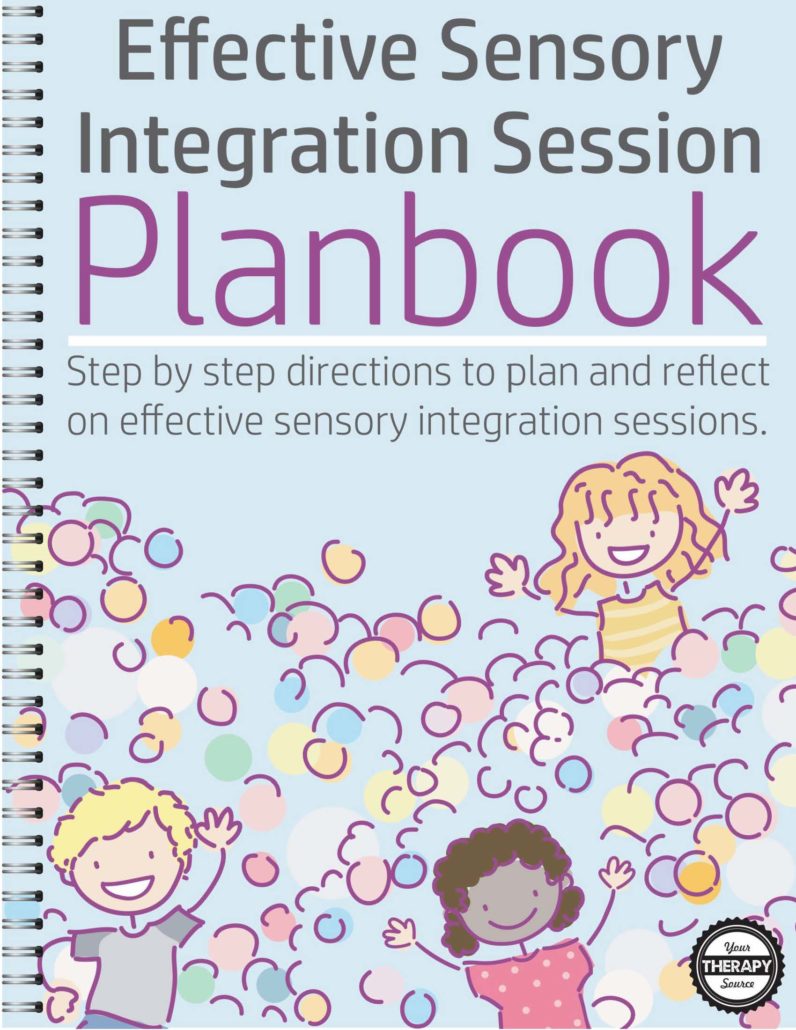
Effective Sensory Integration Session Planbook
REMINDER: Every Student is Unique
The goals that follow are meant to be examples. Please remember that every student is unique and requires individualized goals for their IEP. Discuss with the entire team, including the student, what the functional outcomes are for the student before writing the goal. You can check out these related articles on IEP goals for more ideas to help your students succeed in the classroom and beyond:
- List of Students’ Strengths and Weaknesses for the IEP
- Self-Regulation IEP Goals
- Written Expression IEP Goals
- Self Advocacy IEP Goals
- IEP Goals for Anxiety
- OT IEP Goals
- Executive Functioning IEP Goals
OT IEP Goals for Sensory Processing to Address Limited Focus and Attention
Students with Sensory Processing Disorder (SPD) may experience challenges in maintaining focus and attention in the classroom due to sensory sensitivities or distractions. Occupational Therapists (OTs), working collaboratively with the IEP team, can craft SMART (Specific, Measurable, Achievable, Relevant, Time-Bound) goals to address these issues effectively. Here are five examples of such goals:
- Goal 1: Improving Time on Task – The student will identify and implement strategies to minimize distractions during classroom activities. This will result in a 40% reduction in off-task behaviors by June, as observed during class.
- Goal 2: Enhancing Self-Regulation – The student will develop self-regulation techniques to manage sensory overload and remain focused during lessons, leading to a 50% decrease in impulsive behaviors during sensory-stimulating situations.
- Goal 3: Extending Attention Span – The student will work on extending their attention span during academic tasks, resulting in a 30% increase in the duration of focused attention during classroom activities.
- Goal 4: Implementing Sensory Breaks – The student will learn to request and take sensory breaks as needed to regain focus. This will result in a 60% decrease in sensory-related disruptions, as observed over a semester.
- Goal 5: Utilizing Sensory Tools – The student will employ sensory tools such as fidget toys or noise-canceling headphones to enhance focus, leading to a 70% reduction in classroom distractions related to sensory sensitivities.
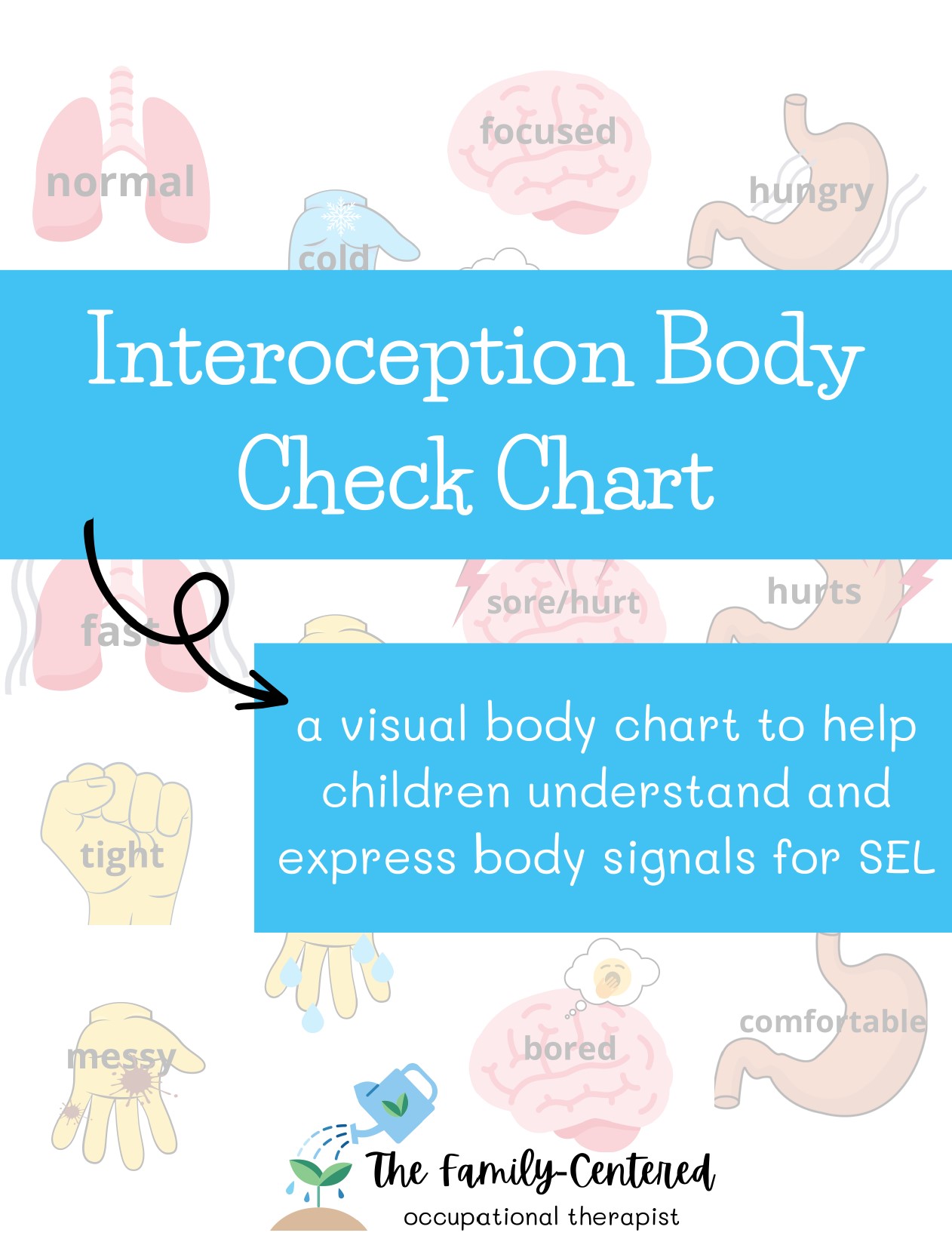
Interoception Body Chart Check
OT IEP Sensory Goals to Address Behavioral Challenges
Students who struggle with sensory processing may sometimes exhibit disruptive behaviors as a means of coping with sensory overload or discomfort. These behaviors not only affect their own learning but also disrupt the educational experience for their peers. In this section, we present a series of SMART (Specific, Measurable, Achievable, Relevant, Time-Bound) OT IEP goals meticulously designed to target and mitigate these behavioral challenges. Each goal is structured to provide a clear focus, measurable outcomes, and a defined timeframe for evaluation, ensuring that students receive the support they need to thrive in the classroom while building essential self-regulation skills.
- Goal 1: Reducing Disruptive Behaviors – The student will develop self-regulation strategies to reduce disruptive behaviors in response to sensory overload. This will result in a 50% decrease in classroom disruptions by the end of the school year, as observed by teachers and recorded in behavior logs.
- Goal 2: Implementing Coping Techniques – The student will learn and employ sensory coping techniques, leading to a 60% decrease in self-harming behaviors during sensory-related distress. Progress will be assessed through regular check-ins and observations over two semesters.
- Goal 3: Enhancing Emotional Expression – The student will develop healthier ways to express emotions when experiencing sensory discomfort, reducing instances of aggressive outbursts by 70% within one academic year. Behavioral records and teacher observations will track progress.
- Goal 4: Transitioning Calmly – The student will practice transitioning calmly between sensory-stimulating environments, resulting in a 40% decrease in outbursts during transitions. Progress will be assessed through transition records and observations during the school year.
- Goal 5: Encouraging Self-Advocacy – The student will learn to recognize sensory discomfort and advocate for sensory accommodations, reducing behavioral challenges by 50% over the course of one school year. Progress will be assessed through teacher reports and the student’s ability to request accommodations when needed.
Fine Motor Skills OT IEP Goals for Sensory Processing
In the realm of sensory processing, fine motor skills are often impacted, affecting a student’s ability to perform tasks that require precision and dexterity. These goals focus on enhancing fine motor skills while considering the sensory processing difficulties that may hinder a student’s progress. Here are five examples of such goals:
- Goal 1: Tactile Sensitivity – The student will improve tactile sensitivity to different textures, as evidenced by successfully engaging with five different textured materials in classroom activities by the end of the second quarter.
- Goal 2: Controlled Muscle Movements – The student will develop controlled muscle movements to prevent paper from tearing while writing or erasing. This will be observed in a 75% decrease in instances of torn paper during writing tasks by the end of the school year.
- Goal 3: Precise Fine Motor Skills – The student will enhance precision in fine motor skills, leading to a 60% increase in the successful completion of buttoning and unbuttoning clothing within one academic year.
- Goal 4: Tactile Discrimination – The student will refine tactile discrimination skills, as demonstrated by accurately identifying different textures in 8 out of 10 sensory exploration trials by June.
- Goal 5: Fine Motor Coordination – The student will improve fine motor coordination, resulting in successful manipulation of objects in 9 out of 10 trials during classroom activities by the end of the semester.
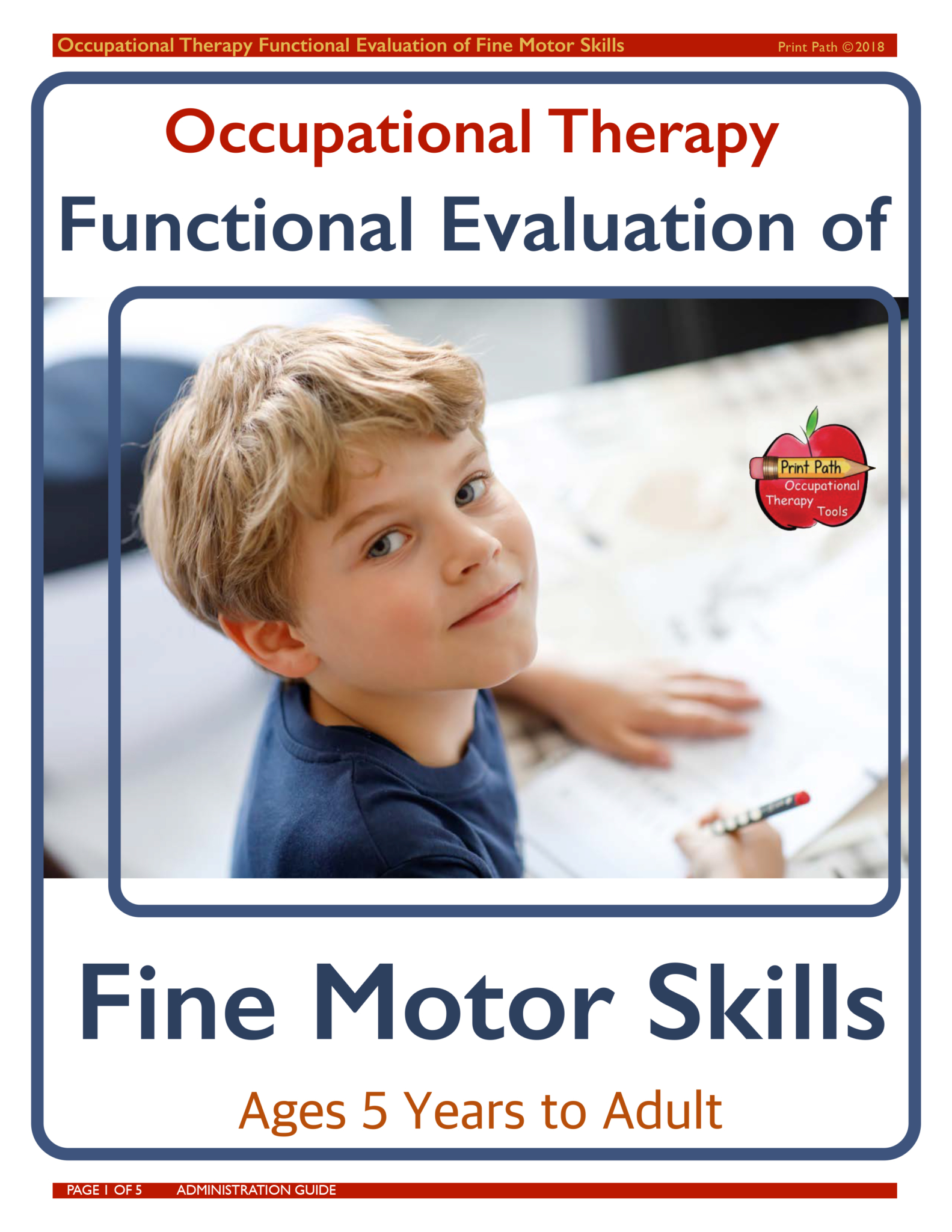
Fine Motor Skills Assessment for OT
OT IEP Goals for Social Skills
Sensory sensitivities can present significant barriers to a student’s ability to engage in social interactions effectively. These challenges may manifest as difficulties with personal space boundaries, discomfort in noisy environments, or struggles with peer interactions—all of which can impact their relationships with peers. These goals aim to enhance social interaction skills while considering the sensory processing challenges that may hinder the student’s progress. Here are five examples of such goals:
- Goal 1: Personal Space Awareness – The student will develop personal space awareness, leading to a 40% reduction in instances of unintentional invasion of peers’ personal space by the end of the school year, as observed during social interactions.
- Goal 2: Noise Tolerance – The student will increase tolerance to noisy environments, resulting in the ability to engage in group activities without distress. This will be demonstrated by actively participating in group sessions without seeking sensory breaks in 80% of observed instances.
- Goal 3: Turn-Taking Skills – The student will enhance turn-taking skills during social games and activities, resulting in successful participation in group games and structured social interactions in 90% of observed instances by the end of the semester.
- Goal 4: Communication and Interaction – The student will work on improving communication and interaction skills with peers during group activities. This will lead to successful engagement in peer interactions without sensory-related challenges in 80% of observed instances within one academic year.
- Goal 5: Emotional Regulation – The student will improve emotional regulation during social interactions, leading to a 60% reduction in instances of emotional dysregulation during peer conversations within one academic year, as assessed by the OT and caregiver reports.
These SMART OT IEP goals aim to address social interaction problems while considering sensory processing challenges, fostering functional outcomes that enable students to navigate social settings more successfully and build meaningful relationships with their peers.
OT IEP Goals for Sensory Processing Related to Academic Underachievement
Sensory processing difficulties can pose significant challenges to a student’s academic success. These challenges may manifest as difficulties in processing classroom instructions, organizing thoughts, or becoming overwhelmed during tests and assignments. OT intervention can help teach students about sensory strategies for everyday activities at school and home. Here are five examples of individual goals:
- Goal 1: Following Classroom Instructions Using Sensory Strategies – The student will be able to follow classroom instructions the first time they are provided, utilizing sensory strategies, with a target of 80% accuracy within one academic year, as observed by the classroom teacher.
- Goal 2: Developing Organizational Skills – The student will develop organizational skills to better structure their thoughts and assignments. This will lead to a 50% reduction in instances of disorganized work and assignments, as observed by the OT and classroom teacher, by the end of the school year.
- Goal 3: Effective Test and Assignment Management – The student will work on strategies to manage sensory demands during tests and assignments. This will result in a 60% reduction in instances of sensory-related test or assignment avoidance, as observed by the OT and teacher reports, within one academic year.
- Goal 4: Utilizing Sensory Strategies for Focus – The student will learn sensory strategies to help with focus during assignments in school or at home, resulting in a 40% increase in the consistent and timely submission of homework assignments and improved classroom assignment completion, as recorded by the teachers and the student over two semesters.
- Goal 5: Developing Sensory Awareness for Academic Achievement – The student will develop sensory awareness techniques to recognize and address sensory overload. This will result in a 70% reduction in instances of sensory-related academic disruptions, as observed by the OT and teacher reports, by the end of the school year.
IEP Goals for Reduced Participation in Classroom Activities
Sensory processing challenges can significantly limit a student’s willingness to participate in various classroom activities, including group projects and physical education. Such limitations can impact their social development, engagement in the learning process, and overall academic success. Here are five examples of goals:
- Goal 1: Encouraging Group Participation – The student will learn sensory strategies to encourage active participation in group activities, leading to a 50% increase in group project involvement and collaboration, as observed by the classroom teacher, within one academic year.
- Goal 2: Increasing Engagement in Physical Education – The student will use sensory regulation techniques to increase engagement in physical education classes, resulting in a 40% increase in active participation during PE sessions, as observed by the PE teacher, by the end of the school year.
- Goal 3: Enhancing Social Interaction – The student will learn sensory strategies to foster peer relationships and overall social development, leading to a 60% reduction in instances of social withdrawal during classroom activities, as assessed by teacher reports and observations over two semesters.
- Goal 4: Active Participation in Classroom Discussions – The student will develop sensory strategies to actively engage in classroom discussions, resulting in a 70% increase in active participation during class discussions, as observed by the classroom teacher, within one academic year.
- Goal 5: Reducing Sensory-Related Avoidance – The student will work on sensory strategies to reduce sensory-related avoidance of classroom activities, leading to a 30% decrease in instances of avoidance behavior, as observed by the OT and teacher reports, by the end of the school year.
These OT IEP sensory goals aim to support students in overcoming sensory processing challenges, fostering functional outcomes that promote active participation in various classroom activities, enhance social development, and improve their overall engagement in the learning process.
Empowering Students Through Sensory Strategies
In the realm of education, where every student’s unique needs and challenges are considered, Occupational Therapists (OTs) play a pivotal role in ensuring that sensory processing difficulties do not hinder a student’s path to success. By crafting SMART (Specific, Measurable, Achievable, Relevant, Time-Bound) OT IEP goals that address sensory issues, OTs empower students to thrive in the school environment.
Key Takeaways:
- Crucial Role of OTs: Occupational Therapists in school settings have a crucial role in supporting students with sensory processing challenges. Their expertise contributes significantly to enhancing students’ academic and functional outcomes.
- Functional Outcomes Matter: OT IEP goals are not just about addressing sensory issues in isolation. They are designed to foster functional outcomes that empower students to actively participate in education, develop emotional regulation, improve social interactions, and excel academically.
- SMART Goals: Crafting SMART goals is essential for measuring progress effectively. Specific, measurable, achievable, relevant, and time-bound goals provide a clear roadmap for tracking a student’s development.
- Addressing Sensory Processing Challenges: Sensory processing challenges can impact a student’s focus, emotional regulation, social interactions, and academic performance. By addressing these challenges with sensory strategies, students can overcome barriers and reach their full potential.
- Holistic Approach: OTs collaborate with students, teachers, and the IEP team to develop comprehensive goals that consider the student’s unique needs. These goals encompass a holistic approach to education, taking into account not only academic success but also emotional well-being and social growth.
- Empowering Students: Teaching students sensory strategies empowers them to self-regulate, engage actively in classroom activities, participate in social interactions, manage emotions, and excel academically. These skills are critical for their overall development and success in the school environment.
The integration of sensory strategies into OT IEP goals can be a game-changer for students with sensory processing challenges. It equips them with the tools they need to navigate the complexities of the educational environment, fostering functional outcomes that pave the way for a brighter academic future. As we prioritize the well-being and success of each student, the collaboration between OTs, educators, and the IEP team remains instrumental in shaping a more inclusive and supportive educational landscape.
